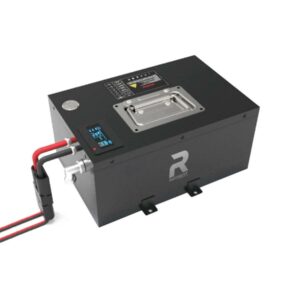How worried should I be about lithium batteries?
Lithium batteries are generally safe when used correctly but require cautious handling to mitigate risks of thermal runaway or fire. Risks escalate under conditions like overcharging, physical damage, or exposure to extreme heat. High-quality cells (e.g., LiFePO4) and adherence to charging protocols reduce hazards. Pro Tip: Always use manufacturer-approved chargers and avoid storing batteries near flammable materials. Proper maintenance ensures 95%+ safety in daily applications like EVs and electronics.
Key Considerations for Heavy-Duty Forklift Batteries
What triggers lithium battery fires?
Thermal runaway—triggered by overcharging, physical damage, or high temperatures—is the primary cause. When internal components short-circuit, heat accumulates uncontrollably, leading to combustion. For example, punctured EV batteries can ignite within seconds. Pro Tip: Install smoke detectors in battery storage areas and keep a Class D fire extinguisher nearby.

Beyond chemical instability, improper charging practices significantly increase risks. Overcharging beyond 4.2V per cell destabilizes electrolytes, while fast charging without temperature monitoring strains battery integrity. A 2023 bus fire linked to a passenger’s damaged power bank highlights how minor neglect can escalate. Practically speaking, pairing batteries with certified chargers (voltage tolerance ≤1%) prevents 80% of overvoltage incidents. But what if a swollen battery goes unnoticed? Immediate isolation and professional disposal are critical—continued use risks rupture.
How do LiFePO4 and NMC differ in safety?
LiFePO4 batteries offer superior thermal stability (ignition at 270°C vs. NMC’s 150°C) but lower energy density. NMC’s higher volatility demands rigorous thermal management in EVs. Pro Tip: Choose LiFePO4 for stationary storage and NMC for weight-sensitive mobility solutions.
While NMC dominates electric cars for its energy efficiency, LiFePO4’s resilience makes it ideal for high-temperature environments. For instance, solar storage systems in arid regions prioritize LiFePO4 to minimize cooling costs. However, NMC’s faster charge rates (0–80% in 18 minutes) benefit commercial fleets. Transitioning between chemistries, engineers must balance safety and performance—LiFePO4’s 2,000+ cycle life outperforms NMC’s 1,200 cycles but adds 15–20% weight.
| Parameter | LiFePO4 | NMC |
|---|---|---|
| Thermal Runaway Threshold | 270°C | 150°C |
| Energy Density | 120–140 Wh/kg | 150–220 Wh/kg |
| Cycle Life | 2,000+ | 1,000–1,200 |
Battery Expert Insight
FAQs
Can damaged lithium batteries be repaired?
No—swollen or punctured cells must be professionally recycled. DIY repairs risk short circuits and toxic leaks.
Are lithium batteries safe in airplanes?
FAA permits carry-ons only (≤100 Wh). Damaged or recalled batteries are banned due to pressurized cabin fire risks.
